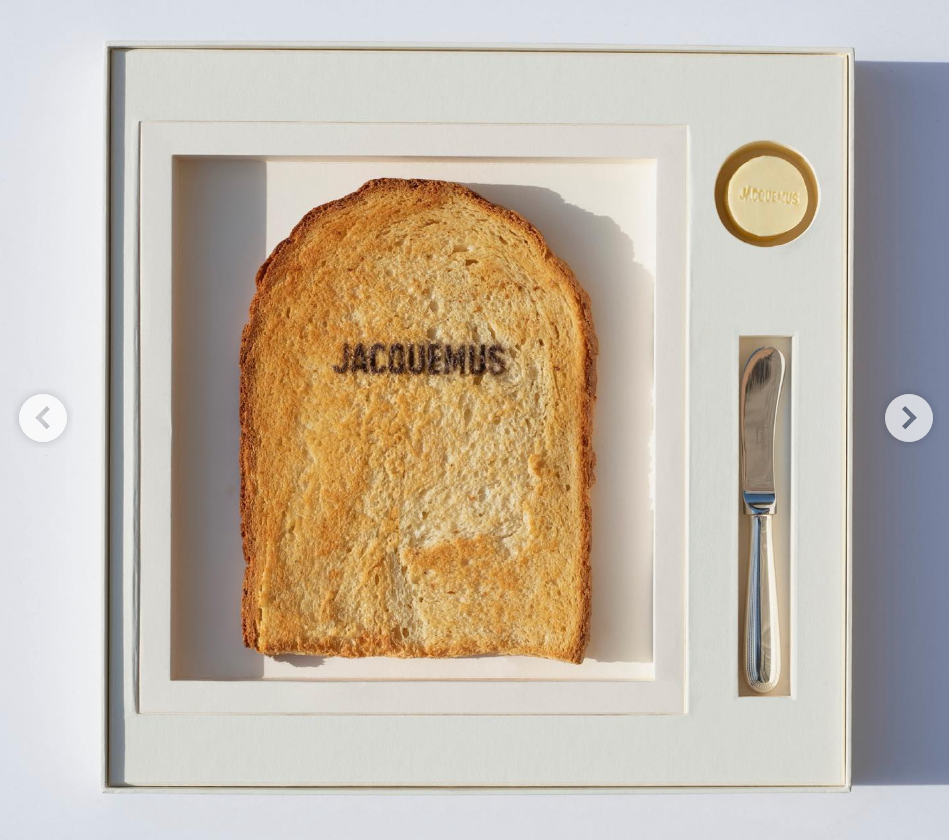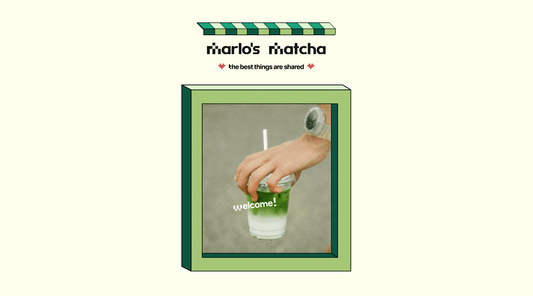
Food Marketing in 2025—Rhode, Skims & Jacquemus
Imagine you're mindlessly scrolling through Instagram when a towering chocolate milkshake next to Kim Kardashian pops up.
Your thumb stops mid-swipe. It grabs your attention.
That's the power of food marketing at work.
That milkshake isn't selling you a drink—it's promoting shapewear. And it worked.
While countless fashion posts blur together in your feed, the food image made you stop and look.
Skims knows what Rhode, Jacquemus, and dozens of other brands have discovered—food imagery cuts through digital noise like nothing else.
In this article, we'll explore why food marketing works so effectively and examine how three leading brands use edible imagery to capture attention and drive sales.
Why Food Marketing Stops The Scroll
Senses Awakened
When you see food in an advertisement, your brain doesn't just process it as another image.
Food photography triggers multiple sensory memories at once, creating what researchers call a "multisensory experience" without any physical interaction.
This makes food imagery particularly powerful for ecommerce brands that lack physical storefronts.
When customers can't touch or sample products in person, food visuals bridge that sensory gap, giving potential buyers a taste of what they're missing.
Feel Good Factor
Certain foods act as shortcuts to happiness in your brain.
Think about how you feel when you see chocolate, honey, or freshly baked donuts. These foods are hardwired to your brain's reward pathways, triggering dopamine responses.
Smart brands borrow this natural feel-good factor by pairing their products with these happiness triggers.
When Rhode describes their skincare as creating "glazed-donut skin," they're not just describing a look. They're tapping into the warm, satisfied feeling you get from indulging in something sweet.
This technique works because edible metaphors help you picture the promised result without heavy-handed descriptions.
Price Anchoring
Food marketing also subtly shifts your perception of value. When brands position their products alongside dessert imagery, they reframe expensive purchases as everyday indulgences.
A $30 lip gloss might feel steep at first glance, but when it's presented as a "latte-level" treat, suddenly the price feels reasonable. You probably spend that much on coffee in a week without thinking twice.
This dessert adjacency technique makes premium pricing feel accessible by comparing it to treats you already buy regularly.
Examples—Rhode, Skims & Jacquemus
Three brands have mastered the art of food marketing, each using edible imagery in distinct ways that align perfectly with their brand identity.
Let's examine how Rhode, Skims, and Jacquemus transform simple food references into powerful marketing tools.
Rhode
Rhode has built their entire brand language around food terminology.
This isn't just clever naming. It's a comprehensive strategy that makes skincare feel approachable and desirable.
Their product names tell a story through taste.
The Barrier Butter cream doesn't just promise hydration; it suggests skin so smooth and nourished it feels like butter. Glazing Milk evokes the glossy finish of freshly glazed pastries. The names of the Peptide Lip Treatment are rhode vanilla, salted caramel, watermelon slice, which bring to mind soft, sweet indulgence.
The brand's infamous "glazed donut skin" phrase perfectly demonstrates this approach in action.
Rather than technical skincare language, they used a universally loved treat to help customers understand exactly what their skin would look like after using the products.
Skims
Skims takes a different approach, using food as experiential marketing that creates anticipation and community around product launches.
Their Instagram teasers featuring chocolate milkshakes and SKIMS-branded pancake stacks generate excitement through pure visual appetite appeal.
The brand's April pop-up drive-in concept elevated this strategy beyond social media. Customers could order actual diner-style dishes while browsing shapewear, turning the shopping experience into a complete sensory journey.
This approach transforms food from metaphor into lived experience, creating memorable moments that customers associate with the brand.
Each food-focused campaign builds anticipation through familiar comfort foods, making their shapewear launches feel like special events rather than simple product drops.
Jacquemus
Jacquemus demonstrates how luxury fashion can embrace food marketing without losing sophistication.
Their bread-and-butter show invites literally featured edible elements, with actual bread stamped with the logo creating a tactile connection between everyday nourishment and high fashion.
The "Butter brick" imagery across their social media channels juxtaposes pantry staples with couture pieces, creating unexpected visual combinations that stop scrollers in their tracks.
This contrast between ordinary food items and extraordinary fashion makes their content instantly shareable.
By grounding luxury fashion in familiar food imagery, Jacquemus makes their brand feel more accessible while maintaining exclusivity.
Conclusion
Food marketing works because it bridges the sensory gap that online brands face every day.
When customers can't touch, smell, or experience products in person, food imagery creates instant emotional connections through familiar sensory memories.
Rhode uses edible metaphors to communicate product benefits, Skims transforms food into experiential marketing events, and Jacquemus makes luxury fashion accessible through everyday food references.
As ecommerce continues to dominate shopping habits, expect food-driven visuals to become even more central to how brands capture attention and build lasting customer relationships.
Want to use food visuals in your own marketing? Our Food Mockup Bundle is available now on Marlo’s Market.



